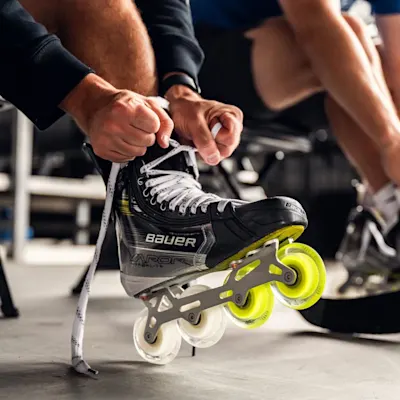What Gear Do I Need for Inline Hockey?
This is the #1 question we get from parents when considering transitioning from ice hockey to inline hockey. It’s important to understand the subtle differences in gear requirements. Here’s a quick rundown for parents and players:
- Inline Skates: Specialized inline hockey skates are recommended, although standard inline skates can be used. Hockey-specific boots offer better support and performance. Most of the major manufactures of ice hockey skates also make inline skates including Bauer & CCM with the addition of brands that are tailored towards inline like Mission, Tour and Alkali. Skate prices can range from $200-$900.
- Pants and Padding: While ice hockey breezers and socks are acceptable, most inline players prefer lighter, less cumbersome inline hockey girdles paired with inline hockey pants. These girdles typically feature lightweight foam padding designed for comfort and mobility, keeping players cooler and less restricted than traditional ice hockey breezers. Inline hockey girdles can range from $40-$100, and inline hockey pants from $50-$100. When purchasing jerseys for the team inline hockey pants are included in the cost.
- Upper Body Protection: Shoulder pads are generally optional and typically not used in inline hockey. However, some players may opt for a padded inline hockey shirt under their jerseys for added comfort and minor protection.
- Common Gear from Ice Hockey: Helmets with cages or face masks, gloves, elbow pads, and shin pads carry over directly from ice hockey. Stick taping preferences might vary slightly, but these adjustments are personal choices rather than requirements.
- Wheel Selection: Choosing the right wheels is crucial, especially when playing on the sport court tile surfaces common at inline hockey tournaments. Specific inline hockey wheels provide better grip and maneuverability, significantly enhancing gameplay performance.
Understanding these key differences ensures players remain safe, comfortable, and equipped for optimal performance on the inline rink.





